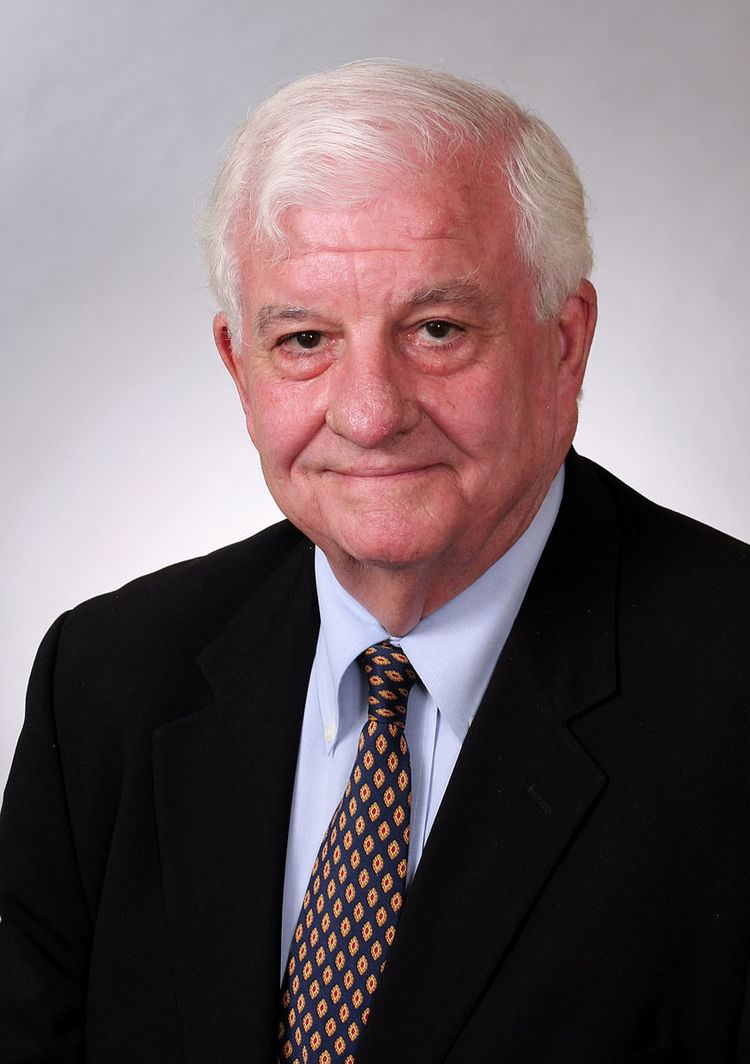Name James Nagle | ||
 | ||
James Lee (Jim) Nagle (born 1937 in Iowa City) is an American architect practicing in Chicago.
Contents
Career
Nagle received a Bachelor of Arts from Stanford University in 1959, a Bachelor of Architecture from M.I.T. in 1962, and a Master of Architecture from Harvard University in 1964. Following graduation from Harvard, Nagle travelled to the Netherlands as a Fulbright Scholar to study architecture and urbanism. On his return to the United States in 1965, Nagle joined the office of Stanley Tigerman, leaving in 1966 to open a firm with Larry Booth, a fellow architect at Tigerman's office. In 1981, Nagle left his partnership with Booth to establish Nagle Hartray and Associates with Jack Hartray. The firm is known today as Nagle Hartray Architecture.
Nagle has taught design at the University of Illinois at Chicago (UIC) and the Illinois Institute of Technology (IIT). He has made accreditation visits to Columbia University and Harvard University and has taught, exhibited, and lectured extensively at numerous other schools of architecture. Additionally, he has served as Chairman of the AIA National Committee on Design, President of the Chicago Architecture Foundation, President of the Graham Foundation Board, and Design Juror on many State and National Awards Programs. He is a member of the Archeworks Board of Directors, the Design Matters Advisory Committee, and the Board of Overseers at the IIT College of Architecture.
Nagle’s firm has won over seventy-five industry design awards and has been published in architectural magazines nationally and internationally. Nagle has designed over 100 single-family houses for clients across the country.
The Chicago Seven
In the late 1970s, Nagle became a member of the Chicago Seven, a group led by Tigerman which emerged in opposition to the doctrinal application of modernism, as represented particularly in Chicago by the followers of Ludwig Mies van der Rohe.
In 2005, the Museum of Contemporary Art, Chicago, organized a reunion of the Chicago Seven to discuss the contemporary state of Chicago architecture, Celebrating 25 Years of the Chicago Seven. As part of the panel discussion, Nagle commented on the state of affairs that prompted the intervention of the Chicago Seven: "It wasn't Mies that got boring. It was the copiers that got boring.... You got off an airplane in the 1970s, and you didn't know where you were." In his interview as part of the Chicago Architects Oral Histories Project, Nagle spoke of the work his office was doing at that time: "I remember the reaction to [one of our projects] was, Wow, these guys are changing; they're doing things that are different from what they did before; there's a new movement afoot. So we all got excited about moving on to something that was different. A lot of it really had to do with history. That's what the postmodernist movement was all about. The appreciation of history made us all much better architects. One of the things that I find from 1930s and 1940s architecture is that the people who have gone through the Beaux-Arts understand the history of architecture and for the good architects, such as Alvar Aalto and Corbusier, it probably made them better modernists because they didn’t learn through abstraction. Gropius was wrong. You should know your history and understand and be able to operate on those levels and then go on to do your own thing and presumably do something that’s original."
